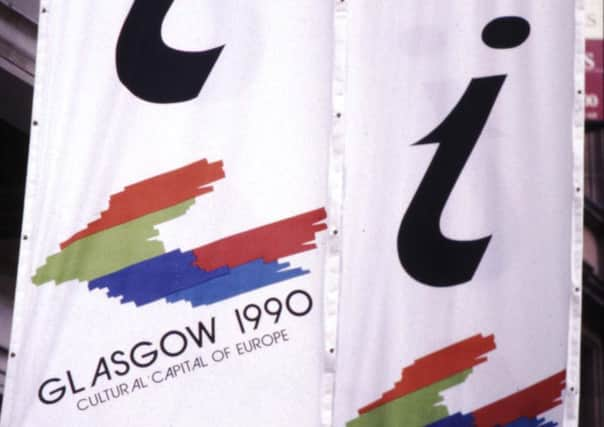Brian Ferguson: Glasgow City of Culture 25 years on


Those slightly terrifying anniversaries have been coming around far too often for my liking.
It is hard to believe a quarter of a century has now passed since Glasgow enjoyed its reign as European city of culture.
Advertisement
Hide AdAdvertisement
Hide AdDespite copping a fair bit of criticism at the time, there is little doubt Glasgow 1990 has left a lasting legacy.
The Royal Concert Hall, built by the city council at the top of Buchanan Street for the “Year of Culture,” is the most obvious one.
Without it there would have been no venue for Celtic Connections to be launched from just four years later.
Elsewhere, The Arches - the venue for the Glasgow’s Glasgow exhibition - became one of Scotland’s most important cultural hubs until its tragic and avoidable closure earlier this year.
The Tramway, created in the former Museum of Transport in the south side, is currently home to the Turner Prize exhibition on its first foray into Scotland, following a series of winners from Glasgow.
Its cultural sector has been transformed, with more than 5300 people now working in the arts, while the wider creative industries support a further 24,000 jobs.
An estimated 82 per cent increase in the number of performances is partly down to a surge in the number of live music venues, which helped the city secure official Unesco City of Music status.
The SSE Hydro, now the world’s second most-popular venue, has only been open two years but has already become a potent symbol for the city’s renaissance.
Advertisement
Hide AdAdvertisement
Hide AdOther key ventures have included the refurbishment of Kelvingrove Art Gallery and Museum and the development of new canal-side hub for the cultural sector in the north of the city, where the National Theatre of Scotland is building its first permanent headquarters.
Events guru Pete Irvine, one of the key figures involved in the Glasgow 1990 programme, led a trip down memory lane recently at the latest instalment of Born To Be Wide, the award-winning music industry seminars in Edinburgh.
One of many fascinating nuggets was that Edinburgh’s world-famous Hogmanay celebrations, which he has produced for more than 20 years, were actually inspire by two outdoor events in Glasgow which book-ended its year in the limelight.
Irvine credited the success of 1990 to the vision, drive and ambition of a key number of individuals, who pursued and brought Frank Sinatra and Luciano Pavarotti to Glasgow.
Irvine was speaking a few days before Paisley launched its bid to become the UK’s City of Culture in 2021, with a £56 million museum refurbishment at the heart of its plans.
The bid team, led by experienced arts producer Jean Cameron, has boldly predicted 250 new jobs and £89 million worth of benefit to the economy, as well as a tripling of visitors to its High Street if it secures the title.
Renfrewshire Council deserves great credit for instigating such an ambitious bid in the face of the spending cuts which all local authorities are facing. But Paisley’s politicians can clearly see the impact winning the European culture crown had on a city just 10 miles away.
They may also have an eye on Dundee which is now regularly cited as one of the UK’s mist exciting cities, unthinkable even five years ago.
Advertisement
Hide AdAdvertisement
Hide AdIt is no surprise Paisley fancies a slice this of this action. With the likes of Paolo Nutini, David Tennant, John Byrne and Gerard Butler as potential champions, there is no good reason why it cannot be a serious contender.